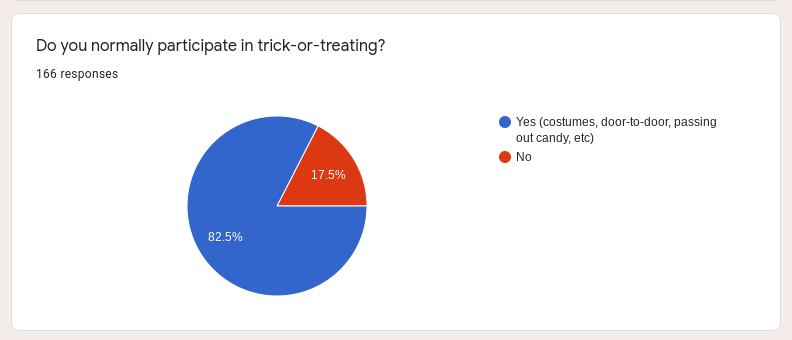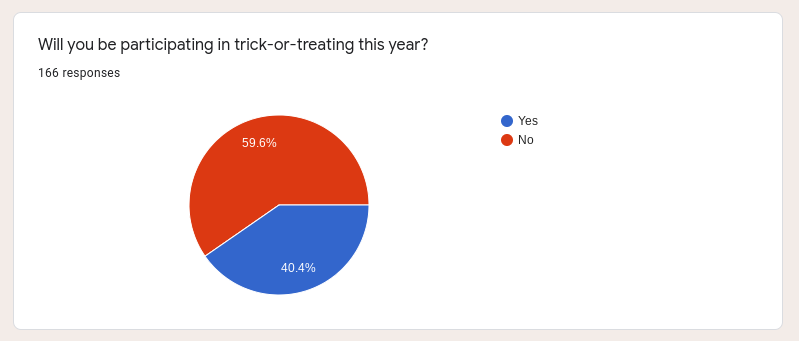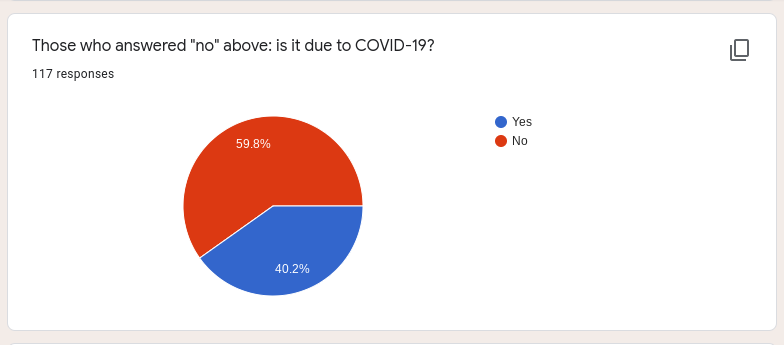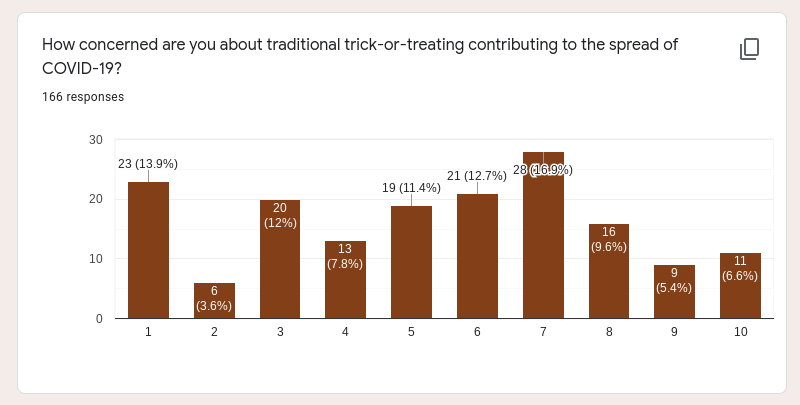Will COVID-19 Affect Trick Or Treating?
The fall is upon us, and it brings one of the most beloved fall holidays with it: Halloween. In previous years, people would usually mark this occasion with costume parties, haunted houses, and the widely-loved trick-or-treating, where young people dress up in costumes and go from door to door asking to be handed candy.
However, in 2020, COVID-19 adds an extra layer of spookiness to this already-eerie season. The looming threat of an ongoing global pandemic should certainly send shivers down anyone’s spine, and trick-or-treating has the potential to look drastically different this year.
“I hope to participate in trick-or-treating this year as long as my area and parents allow me to. They may not due to COVID-19 though,” says Bethany Ivie, a Penn High School freshman. “It’s something I really enjoy doing…It’s one of my favorite parts of Halloween.”
“This year specifically I’m not sure if I will be participating or not,” says sophomore Josiah Penrose. “Partly due to COVID and partly due to my lack of a good idea for a costume this year.”
In a year where almost everything has been impacted by the coronavirus, many can expect Halloween to be no exception. The form of trick-or-treating many are used to has been classified as a “high risk” activity by the CDC (Center for Disease Control), meaning that it has a high potential for spreading the coronavirus, influenza, and other illnesses. Other high-risk activities include trunk-or-treating, indoor costume parties, and crowded haunted houses.

Trick or treating numbers are anticipated to be much lower than in recent years, and cities in 37 states have outright canceled celebration events, according to USA TODAY. A survey of 166 PHS students, the vast majority of which happen to be freshmen, reports that while 82.5% of students usually participate in trick or treating, only 40.4% said that they have plans to do it this year. Of those who answered “no”, 40.4% said that it was explicitly due to concerns about COVID-19. When asked to rate how concerned they were about trick-or-treating contributing to the spread of COVID-19 from a scale of one to ten, responses were varied, but the average response was 5.32.


When asked about his personal concerns about the matter, sophomore Hayden Thompson replied “No, because most people will be wearing masks anyway.” Penrose agreed, adding that some costumes have masks that he says are able to be worn over standard cloth masks. However, the CDC advises against this, claiming that it has the potential to make breathing difficult.

While the concept of a trick-or-treat-less Halloween may seem novel to some, it is not the first time in history that All Hallow’s Eve celebrations have been set aside for health concerns. According to HISTORY.COM, in 1918 many cities around the U.S. also canceled their Halloween revelries out of fear of a virus. October 1918 was the height of the infamous Spanish Flu pandemic, and many officials were afraid that celebrating Halloween would contribute to the illness that was raging throughout the globe. It would ultimately claim 50 million lives worldwide and 675,000 in the U.S.
So, exactly how does someone go about celebrating a safe but spooky Halloween? Whether you are passing out candy or dressing up and going out, there are lots of ways that this tradition can be done safely. For households, prepared goodie bags on tables with gloves is a great alternative to selecting candy from a bowl. Families can also fashion a six-foot-long chute out of paper towel rolls and slide the candy, also wearing gloves, from an appropriate distance into the trick-or-treater’s bucket. Don’t forget the COVID-19 masks, social distance, and PPE. There are plenty of other ways to celebrate that don’t involve face-to-face contact too, such as horror movie marathons and scavenger hunts. More ideas can be found in this CDC article.
If you wish to participate safely, various trick or treat times in Michiana can be found on this ABC57 article. The site is still being updated as more information is available. Trick-or-Treating rules and hours by neighborhood and bureau can be found in the South Bend Tribune.

